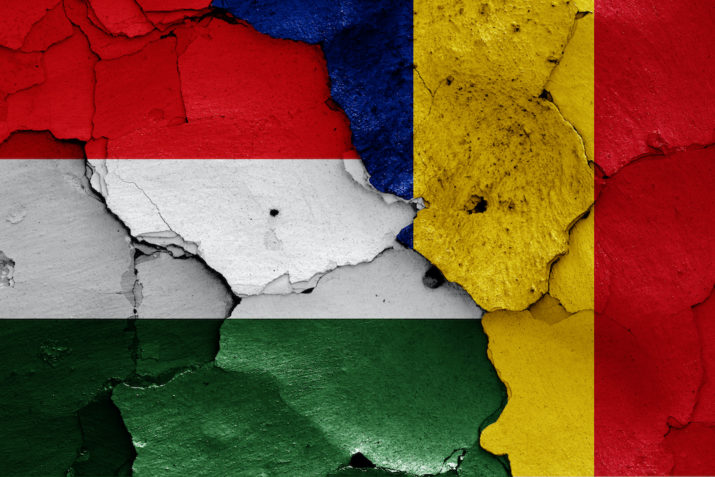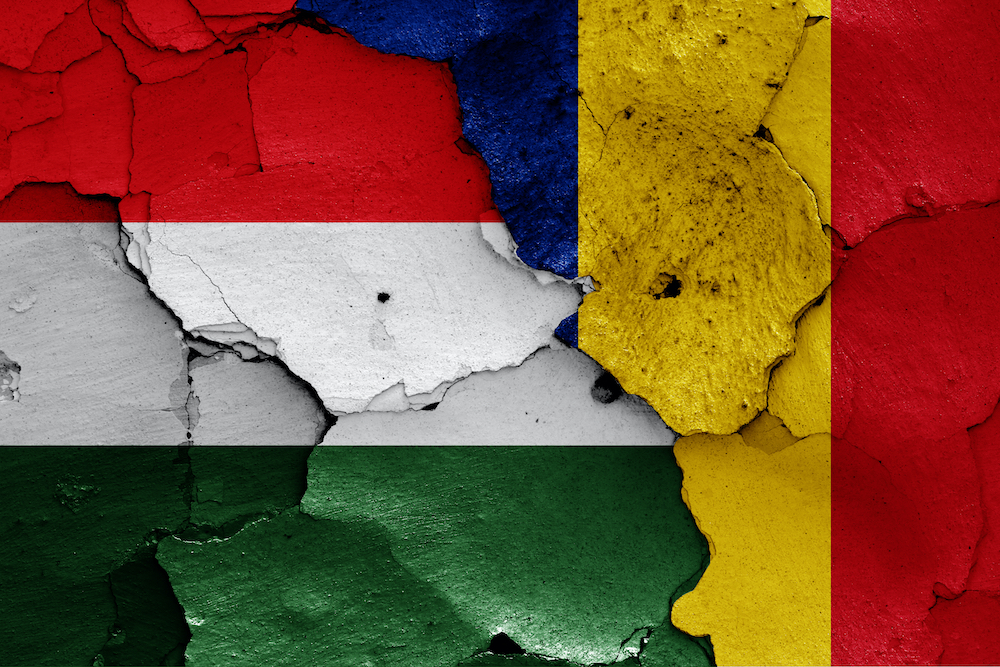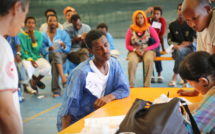

For Europe, 2020 is a year with a double historical connotation: one hundred years ago, Europe’s borders were redrawn, and the post-war order was established based on the principle of self-determination of peoples. Practically, one hundred years ago, Romania was born as a national, unitary, and indivisible state, the territories inhabited by Romanians being recognized as national.
Today, however, in a united Europe whose interconnectivity seems to be insoluble, there is no room for revenge against the past, but history will always be subject to revisionism in a nationalist context. Between Romania and Hungary, for one hundred years, historical issues have impeded the development of consistent bilateral relations, even if the bilateral relations have the character of a “strategic partnership for twenty-first-century Europe” (Romanian MFA 2010). In the midst of these divergences were Transylvania and the provisions of the Treaty of Trianon favorable to the Romanian side, but also the status of the Hungarians in the new state.
The loyalty of Romanian citizens of Hungarian ethnicity to the Romanian state is often questioned. The most recent diplomatic scandal between Romania and Hungary started with the tacit adoption by the lower house of the Parliament of a project of autonomy based on ethnic criteria. Without prospects for the future, Hungarians in Romania are caught in internal political battles, which is why autonomy seems to be the solution to get out of anonymity. However, the echoes of the domestic struggle also resonate in Europe, which makes Romania’s position at the international level vulnerable. I will try to explain the source of the Romanian-Hungarian dissensions, to analyze the political position of the President of Romania and the reaction of the Hungarian MFA.
Even if, overtime, Romania and Hungary have sought to respect the principle of the right of cohabiting peoples to protect their language, culture, and intellectual heritage, between the two states, the dissensions were not limited, each of the two groups trying to dominate the other (Pop 1996).
As World War II set out to reorganize the founding principles of the new Europe, Transylvania became again the subject of the withdrawal of territorial borders, which is why some historians believe that Romania joined the alliance with Hitler precisely because the authorities from Bucharest hoped that at the end of the war, they would regain what they had lost from the Vienna Diktat (1940). Of course, this is not an excuse for the horrors that the Romanian army committed under the command of General Antonescu (Pop 2019).
On September 12, 1944, the armistice agreement between the Romanian government and the United Nations governments was signed in Moscow, which officially recognized the state of Romania’s exit from the anti-Soviet war and its entry into the anti-Nazi war, which meant a subsequent post-war recognition of Romania’s authority over Transylvania, returning to the borders established at Trianon. From this moment on, Hungarians and Romanians were forced to learn to coexist as independent nations, pursuing brotherly relations due to their belonging to the Soviet sphere of influence.
At the beginning of the communist era, the Hungarian minority was seen by the Romanian authorities as friends, comrades of the communist construction, which is why its members were invited to hold leadership positions in the Romanian Communist Party. But the Romanian-Hungarian friendship ended with the appearance of the nationalist fundament of Romanian communism. Nicolae Ceausescu, the visionary leader of the communist world, as he was perceived by the West duet because of his “rebellion”, had turned into a nationalist who saw enemies in every corner of the country, which is why conspiracies according to which Hungarians and Soviets planned the dismemberment of Romania had become extremely common (Cesereanu 2004).
In this landscape of mistrust between Romanians and Hungarians, however, a common lodestar was born: the right to dignity and freedom. The events of 1989 did not take into account nationality or ethnicity. The citizens of Romania wanted to breathe the air of democracy and join the free world, as did the Hungarian citizens.
In this context, the following question arises: how is it possible that two states, members of the European Union, cannot find a common denominator of bilateral relations?
In the early 1990s, Hungary redefined its position vis-à-vis Hungarians abroad, contributing massively to the political and financial support of its neighboring communities. This support was echoed in Bucharest, where the Hungarian community is represented in the Romanian Parliament by the Democratic Union of Hungarians in Romania (UDMR), a cultural association acting as a political party, being present in the last thirty years in almost every government that Romania has had. During this period, UDMR secured several parliamentary victories that were seen by the majority of Romanians as concessions made to ensure social cohesion and a security climate in the regions where Hungarians are in the majority.
Among the fields where Hungarian minority succeed were the areas concerning education in the mother tongue, the right to use the Hungarian language in administration, and a high degree of cultural autonomy compared to other minorities in Romania (sixteen in number), all of them acting as guarantees of good coexistence. The Romanian Constitution confers all of these rights to all Romanian citizens of other ethnicities, each minority having the right to direct representation in Parliament, non-proportional, a separate note-making being UDMR, which manages to obtain about thirty parliamentarians following legislative elections. Budapest has made consistent efforts for the Hungarian minority to benefit from the preservation of cultural identity, after the interethnic conflict in Târgu Mureș materialized in the serious confrontations that took place between March 19 and March 21, 1990.
Since the establishment of the first democratic parliament after 1989, the political representatives of the Hungarians in Romania have fought for an alleged right to self-determination of the Hungarian population, every four years submitting a bill that would provide extended territorial autonomy in Transylvania for those localities in which more than 50 percent of Hungarians live. Each time, these projects were rejected by the lower house of the Romanian parliament, prompting criticism from Budapest. But this year, a vacuum in the parliamentary activity made possible the adoption of the Law on the Autonomy of the Szekler Land by the Chamber of Deputies, as the first notified parliamentary chamber. The vehement reaction of the majority of the population was fueled by the nationalist context of the centenary year of the signing of the Treaty of Trianon, thus calling once again into question the loyalty of ethnic Hungarians to the Romanian state.
This kind of discriminatory behavior towards Hungarians in Romania is a common thing, as they are used as a social and political tool in exploiting Romanians’ fears. Just as in the interwar period Jews were seen as “social parasites,” today, being Hungarian means being an enemy of the people, or at least being suspected that you were inventing a plan to destroy the Romanian nation (Fati 2020). This distrust was cultivated by the political interests of the Romanian and Hungarian leaders. Interestingly, this fear is manifested exclusively towards the ethnic Hungarians, which can be historically and anthropologically explained: the Hungarians oppressed the Romanians during the dualist Austro-Hungarian Empire, and now it is the turn of the Romanians to take revenge. Hungarians in Romania have always wanted a very different social vision from that of the majority: highly decentralized territorial administration, local self-government (modeled on Catalonia), hyper protection of the center for minorities, and the right of Hungarians to break away from the government center. Behind these requirements are two motivations: a social nostalgia of Hungarians for the greatness of the past and a lack of investment in transport infrastructure, education, landscaping, employment, and, more importantly, lack of integration of Hungarian communities.
The national pride of the Hungarians derives from the greatness of the Hungarian crown, which has dominated for centuries, in one form or another, the political life of Eastern Europe, being an important pawn in history. It is quite difficult to be a minority in a national state, but the norms of international law are very clear: the cohabiting peoples have determined themselves, and through the agreement of will, they have formed the Romanian nation.
On the other hand, since 1990, the Romanian Government has not been able to find the right forms of Hungarian integration into the national community. The lack of solutions has led to social segregation that today affects cohabitation. The limited investments in central Transylvania (education did exclusively in Hungarian because the minority community is urgently requesting this), the stubbornness of Hungarians to speak Romania, and self-isolation are forms of a failure of democratic reform and a total lack of the effects of the national integration strategy.
The Hungarian community in Romania is an endogenous community, extremely reluctant of the majority, and wants to obtain as many concessions as possible (Ilie and Marko 2016), resorting to subversive means of hijacking the Romanian political and social order in Transylvania.
The support that the Hungarian state provides to its citizens abroad is consistent financial aid, the possibility of double representation with national authorities (in the country of origin, but also Hungary), and investment in the future of communities (schools, youth centers, sports teams, Hungarian language publishing houses, print media, and television) (Oroszi 2018). Budapest’s actions are globalist and aimed at strengthening the position of power in the region. If we look closely, we will see that these practices are present in all countries that have Hungarian minorities on their territory. Moreover, a journalistic investigation initiated by Victor Ilie and Ștefan Mako, together with the Hungarian journalists from Atlatszo.hu, revealed how Orban Viktor’s former allies from Jobbik sponsored paramilitary movements on the Romanian territory (Ilie and Marko 2016).
The claim to autonomy is exaggerated in European, multicultural, and globalist Romania. The Constitution gives increased rights to minorities, and from an administrative point of view, the leadership is based on the principle of decentralization each county in Romania benefiting from autonomy in local government. The Law on the Autonomy of the Szekler Land was unconstitutional from the beginning, as it provided for new forms of administration, the establishment of a separate legal entity, and a separate jurisdiction from the national one. This status would have guaranteed the formation of distinct forms of representation, based on ethnic criteria, which would undoubtedly have led to the presumed right of self-determination, as provided by international law. Could this lead to the proclamation of the independence of the Szeklerland? We do not know, but national sensibilities must not be affected by any part of this conflict.
Budapest harshly criticized the reaction of the President of Romania immediately after the lower house of Parliament adopted the bill, but it was the duty of the President to defend the constitutional order. It is true that the speech of President Klaus Iohannis was a populist one, with strong civic nationalist accents, which might seem striking considering that he comes from a national minority. The fact that the president belongs to the German minority, the fourth largest in Romania, reveals the fact that the loyalties of national minorities are, for the most part, undergoing profound transformations. Civic partisanship with the majority tends to be much stronger in the case of those minorities who have accepted and fully assumed the integrative quality in the Romanian nation and whose kin-state does not adopt an activist policy towards disrupting socio-political equilibrium. A report by the Institute for the Study of National Minority Issues reveals an extremely important but worrying thing at the same time: 98.3 percent of Hungarians in Romania declare themselves to be Hungarian speakers, and only 1.7 speakers of another mother tongue (especially, Romanian language) (Kiss and Veress 2018), unlike the Jewish minority or the Roma minority, where the percentage of speakers of another mother tongue exceeds 60 percent.
The accusation that “the Social Democratic Party has made agreements with Orban Viktor to sell Transylvania to the Hungarians” (Cseresnyés 2020) is far from the democratic and neutral character of a presidential speech, but at the same time, we cannot overlook the annual disobedience parades and exhortations of Hungarian extremists in central Transylvania an expression of the exploitation of national animosities to ensure the access of groups to political resources.
Such situations extremely degrade the bilateral relations between the two states, differences of opinion being a barrier in the implementation of joint projects. As long as the two states seek to sabotage each other and do not harmonize their positions, Romanians and Hungarians will be in a permanent war of declarations, and those who will suffer will be the citizens. Even though on May 26, an extremely important visit of the Hungarian Foreign Minister took place in Bucharest, which followed with several agreements being signed, the ethnic issue remains topical. The leader of the Romanian diplomacy asked the Budapest Government not to support the Hungarian minority in Transylvania on ethnic criteria, while the Hungarian Foreign Minister, Peter Szijjártó, replied that the same support is given to the Romanians from Hungary, the Hungarian state regarding the two minorities on an equal footing.
We can conclude that the de-escalation of the relations between Romanians and Hungarians depends on how the authorities from Bucharest and Budapest choose to dialogue. A dialogue outside the bilateral framework creates confusion, mistrust, and mutual disappointment. Political conflict will degenerate into a social one at any time, and the long-term effects will be devastating for national cohesion.
Such nationalist manifestations give rise to profound social frustrations, interethnic fragmentation, and the struggle to break away from the center of government causing ideological clashes on all fronts. The current situation in Europe proves that the lack of cohesion leads to asymmetric confrontations between majority and minority. Everywhere in European countries, we can see major tensions caused either by the misunderstanding of the needs of minorities and its political exploitation or by the revolt of the majority against groups belonging to different minorities (religious, ethnic, sexual, etc.). This leads to a fragmentation of European unity, showing us how dangerous nationalism is in times of crisis. European populist movements are increasingly driving the scourge of racism and xenophobia, and the political benefits can be quantified in these election results.
Very soon, Europe will be faced with essential choices for peace: European leaders will have to find quick solutions to prevent inter-ethnic conflicts that could lead to the end of the most prosperous era in existence.
Cătălin-Gabriel Done is a MA student within the Department of International Relations of European Integration, National University of Political Studies and Public Administration, where he’s studying International Relations and European Integration, including the Eastern Partnership challenges. He has worked with the “Theodor Herzl” Center for Israeli Studies, NUPSPA, and Europe Elects, and in February 2019 he led the NUPSPA delegation to CEPS Ideas Lab in Brussels. Currently, he is a junior researcher at ESGA Romania, where he deals with the EU’s relationship with the Eastern Partnership, especially with the Republic of Moldova. He describes himself as a moderate conservative interested in Scandinavian, Arctic and Eastern Studies, including European Integration.
References:
Cesereanu, Ruxandra. 2004. ‘Decembrie ’89 Si Teoria Conspiratiei (I)’. Observatorul Cultural, no. 245.
Cseresnyés, Péter. 2020. ‘Romania President Iohannis Harshly Attacks Szeklerland Autonomy Plans Causing Diplomatic Tension’. Hungary Today. 2020. https://hungarytoday.hu/romania-president-iohannis-harshly-attacks-szeklerland-autonomy-plans-causing-diplomatic-tension/.
Fati, Sabina. 2020. ‘Vor Ungurii Să Cumpere Ardealul? De Ce Este Acuzat Iohannis de Naționalism.’ Radio Europa Liberă România. 2020. https://romania.europalibera.org/a/vor-ungurii-să-cumpere-ardealul-de-ce-este-acuzat-iohannis-de-naționalism/30583437.html.
Ilie, Victor, and Ștefan Marko. 2016. ‘Autonomie Și Petarde’. 2016. https://www.riseproject.ro/documentar-autonomie-si-petarde/.
Kiss, Tamás, and Ilka Veress. 2018. ‘Minorități Din România. Recensământ 2011 – Procese Demografice’. Institutul pentru Studierea Problemelor Minorităților Naționale. http://ispmn.gov.ro/uploads/WP%2065-04-10.pdf.
Oroszi, Babett. 2018. ‘The Orban Government Spent Billions on Hungarian Football Clubs in Serbia, Romania, and Slovakia’. Atlatszo.Hu. 2018. https://english.atlatszo.hu/2018/12/11/the-orban-government-spent-billions-on-hungarian-football-clubs-in-serbia-romania-and-slovakia/.
Pop, Ioan Aurel. 1996. Romanians and Hungarians from the 9th to the 14th Century: The Genesis of the Transylvanian Medieval State. Bibliotheca Rerum Transsilvaniæ 13. Cluj-Napoca: Centrul de Studii Transilvane, Fundația Cultrală Română.
———. 2019. ‘România Și al Doilea Război Mondial: 1940-1945’. In Scurtă Istorie a Românilor, 453–65. București: Litera.
Romanian MFA. 2010. ‘Embassy of Romania in Hungary’. 2010. http://budapesta.mae.ro/node/221.
Photo: Romanian Hungarian flag
Published on August 4, 2020.




